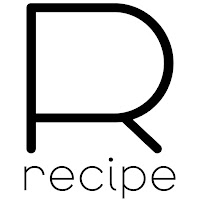Here comes the story behind the recipe
Enter Recipe Title Here

Ingredients:
- Ingredient 1
- Ingredient 2
- Ingredient 3
- Ingredient 4
- and so on...
Instructions:
Step 1
Step 2
Step 3
Step 4
and so on...
Notes:
- Note 1
- Note 2
- Note 3
- and so on...
Some final words...
How to use the recipe template
In the template, look for the line <!--Write post excerpt/intro here--> and replace it with the introductory text of the article.
Everything above the line of code <!-- more--> is included in the post excerpt. You can delete this line if you do not use the post excerpt.
The text Here comes the story behind the recipe is not part of the recipe. Here you can write whatever you like.
Now you have to go on the line <div class="recipe-title"><span itemprop="name"><h1>Enter Recipe Title Here</h1></span></div> - it's line 47 in my gist. Change the title of your recipe here.
Editing the recipe image is a bit more complicated. In this example I will first image in the blog post as the recipe image, but you can use just any other image you want.
When you enter an image in the article blogger.com creates a code similar to the one below:
<div class="separator" style="clear: both;"><a href="https://blogger.googleusercontent.com/img/b/R29vZ2xl/AVvXsEhHNvjHk4e0z5ToVbtonISCEDAqy5Sbc0CQNRmGqz2ycZWQsQlgugORIzmsIVecXJfN_dSZd1jiN6VWvlCGWiDOyT1T2coim425TXFPsxgYkLduSO2Jvk__nTno40IXQPM6YiPXsPkFt_IcitTQ5KGn1_ulmt3zma4J5Px6BhcbAtCFVjkdHUkxWeh7/s200-c/recipe-placeholder.jpg" style="display: block; padding: 1em 0px; text-align: center;"><img alt="" border="0" data-original-height="1800" data-original-width="2400" src="https://blogger.googleusercontent.com/img/b/R29vZ2xl/AVvXsEhHNvjHk4e0z5ToVbtonISCEDAqy5Sbc0CQNRmGqz2ycZWQsQlgugORIzmsIVecXJfN_dSZd1jiN6VWvlCGWiDOyT1T2coim425TXFPsxgYkLduSO2Jvk__nTno40IXQPM6YiPXsPkFt_IcitTQ5KGn1_ulmt3zma4J5Px6BhcbAtCFVjkdHUkxWeh7/s600/recipe-placeholder.jpg" width="600" /></a></div>What we are interested in here is the source code of the image, that portion of the code highlighted in light blue.
https://blogger.googleusercontent.com/img/b/R29vZ2xl/AVvXsEhHNvjHk4e0z5ToVbtonISCEDAqy5Sbc0CQNRmGqz2ycZWQsQlgugORIzmsIVecXJfN_dSZd1jiN6VWvlCGWiDOyT1T2coim425TXFPsxgYkLduSO2Jvk__nTno40IXQPM6YiPXsPkFt_IcitTQ5KGn1_ulmt3zma4J5Px6BhcbAtCFVjkdHUkxWeh7/s600/recipe-placeholder.jpg
The s600 parameter tells blogger to resize image with longest side of 600px. We don't need such a large image. The schema.org specifications say that the image for the recipe should be 185px x 185px minimum. So we will replace s600 with s200-c as you see on line 51 in the gist file (the -c parameter crops the image to a square).
Since you are here, it's a good opportunity to fill in the alt parameter of the image on the same line of code, fto help with SEO.
Then fill in the number of servings and the number of calories per serving. If you don't know the number of calories per portion you can delete this information - it is on line 58 of the code.
<li><span itemprop="ingredients">Ingredient 1</span></li>. Leave only as many code blocks as the recipe has ingredients. Delete the extra blocks, or add new blocks if necessary.<p><span itemprop="recipeInstructions">Step 1</span></p>.The notes section is not part of the recipe scheme. You can delete it altogether or add any information you wish here.
Checking the information in the recipe schema
Once the recipe is published, it is a good practice to check it with the Rich Results Test. To do this copy the URL of the post where the recipe appears, go to https://search.google.com/test/rich-results and insert the URL there.
If everything is OK you should not receive any errors. It is normal to get some warnings, because in this recipe template I have not implemented some optional fields from the recipe schema.
For the moment these warnings are not a problem, they do not have an impact on the ranking of the recipe in Google searches.
One more thing...
If you have an older blog, with many recipes written in plain text, it's easier to enter the recipe schema in JSON-LD format. How you can do this I have explained in another article.









0 Comments